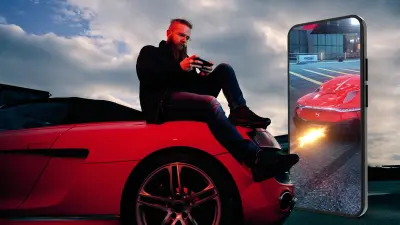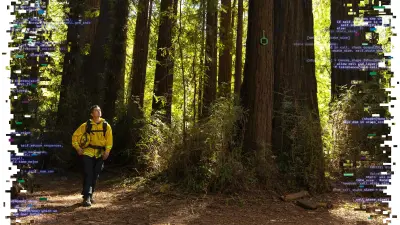Action camera with image stabilization — wild jumps and sharp images!
Action cams with image stabilization capture the most dynamic moments — and a sensor from Bosch makes it possible.

For Yanneck Konda, the moment his board leaves the ground and he starts to fly means everything. He and his friend shoot films together about their breathtaking jumps in the thin mountain air. A MEMS sensor from Bosch makes it possible for the action camera's videos to have not only high resolution, but also razor-sharp and stabilized pictures. These microelectromechanical systems enable the camera to detect the direction of movement and adjust the image accordingly.
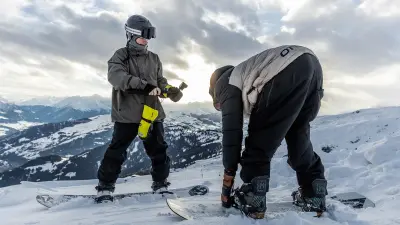
It’s all about the boards for Yanneck Konda. The 24-year-old’s fulfillment in life comes from having a snowboard or wakeboard strapped to his feet. The athlete lives deep in the south of Germany at the foot of the towering Allgäu Alps. His inspiration comes from the snowboarding films of the early 2000s. In winter, he shredded the snow of the nearby mountains, and in summer, he surfed the waves of his region's numerous lakes on his wakeboard. His passion gained him a spot on the German snowboard team. However, at the age of 16, he decided it wasn’t the right fit for him. “Competitions don’t do it for me. What fascinates me are those perfect moments that you can only experience with your friends,” says Yanneck as he explains his decision against snowboarding competitively. “I wanted to soar through the air, artistically expressing both this feeling and my riding style.” To be able to fully dedicate himself to his passion, he and his three long-time friends founded the sports film crew “Young and Savage”.

I want to use high-quality films to get viewers fired up about snowboarding. It’s incredible that such a tiny sensor from Bosch makes that possible.
Powerful performance – on the slopes and in the camera
Movements are a huge challenge for cameras — especially when it comes to winter sports. The unevenness of the slopes makes the image wobble, and the high speed and constantly changing distance to other riders make it difficult to focus. However, the success of the camcorder in the mid-1990s gave rise to a lively scene of athletes who filmed their tricks and made their clips available to the public. “My idol is Heinz Löhle, a former professional snowboarder from my area. His videos influenced me as a kid,” says Yanneck. In order to capture a trick without any wobble back then, the video camera had to be fixed in place at a distance and panned. There’s no comparison to the images modern cameras make possible. These days, two snowboarders ride right next to each other while one of them films with an action camera. The cameraman can even follow along over jumps and when the rider catches big air. The fact that the footage nevertheless stays sharp and perfectly steady is made possible by using the BMI260 MEMS sensor from Bosch as an “image stabilization sensor.”
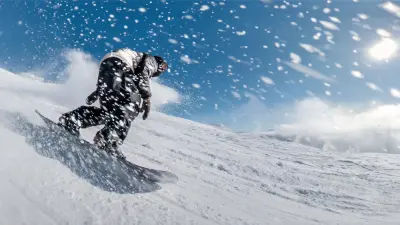
Bosch technology in action on the slopes
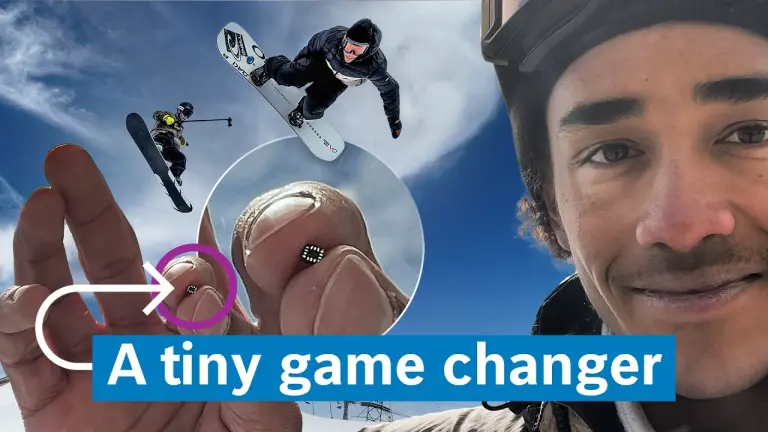
Loading the video requires your consent. If you agree by clicking on the Play icon, the video will load and data will be transmitted to Google as well as information will be accessed and stored by Google on your device. Google may be able to link these data or information with existing data.
The BMI260 MEMS sensor from Bosch, which is built into the action cameras, delivers the data for optical image stabilization (OIS) and makes it possible to get sharp pictures and videos even under extreme conditions. A positive side effect for professional applications is that the time-consuming process of post-editing wobbly footage is no longer necessary.
Rugged, lightweight, and extremely durable
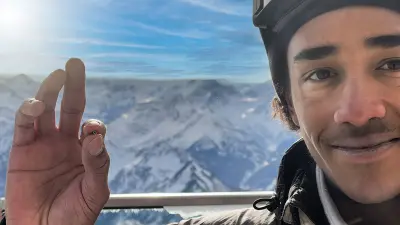
It’s not for nothing that Yanneck Konda’s crew call themselves “Young and Savage”: adventure is the lifeblood of their films. “We have to dedicate one hundred percent of our concentration to riding and our safety when we film. We owe the fact that we can still film to the image stabilization technology in action cameras,” says Yanneck. For an image to be able to be recorded, light has to pass through a lens and hit a light-sensitive sensor for a certain amount of time. If this buildup of light — i.e., the camera — is moved during exposure, blurring occurs. An inertial measurement unit from Bosch (IMU for short) detects the direction of movement. The just 2.5 mm x 3.0 mm x 0.83 mm housing contains two tiny sensors that measure rotation rate and acceleration. These microelectromechanical systems — MEMS for short — consist of silicon-etched structures with movable parts called combs that are finer than a human hair.
In less than a millisecond,
the sensors from Bosch relay the direction of movement to the camera, which is able to use the data to properly adjust the image. The result is significantly improved photo and video quality.
If the position of the combs in the MEMS changes, the MEMS relays this information in the form of an electrical signal. In turn, a control unit converts the information into a command for the camera – the movement is factored into the footage and the image is stabilized. The decisive factor in this process is precision. The MEMS inertial sensors from Bosch measure the action camera’s movements 6,400 times per second. On top of that, smart power management enables the IMU to run on an exceptionally low amount of power, thereby saving the action cam’s battery. For Yanneck, this is a decisive factor: “We expose the cameras to extremely low temperatures on the mountain, which affects battery life. So you notice really quickly which cameras run out of steam after a run.”


Yanneck relies on a mix of old and new techniques for the “Young and Savage” crew’s films. By doing this, the action camera’s clear, high-resolution images create an exhilarating contrast to the grainy footage an old camcorder produces. “The feeling of having a special time on the mountain with friends captures the aesthetic of the 2000s better than high-resolution images do. However, snowboarding is also action, concentration, and adrenaline. Filming that only works with perfect image stabilization,” he says. Only the MEMS inertial sensors from Bosch, used for image stabilization in action cams, enable the 24-year-old to express his passion as an athlete and video artist the way he wants — in incredible images.


